60 Facts You May not Know about Everest Base Camp Trek
Everest Base Camp Trek Everest Base Camp Trek-All the way to the roof of the world. The Everest Base Camp Trek is the most rewarding adventu...

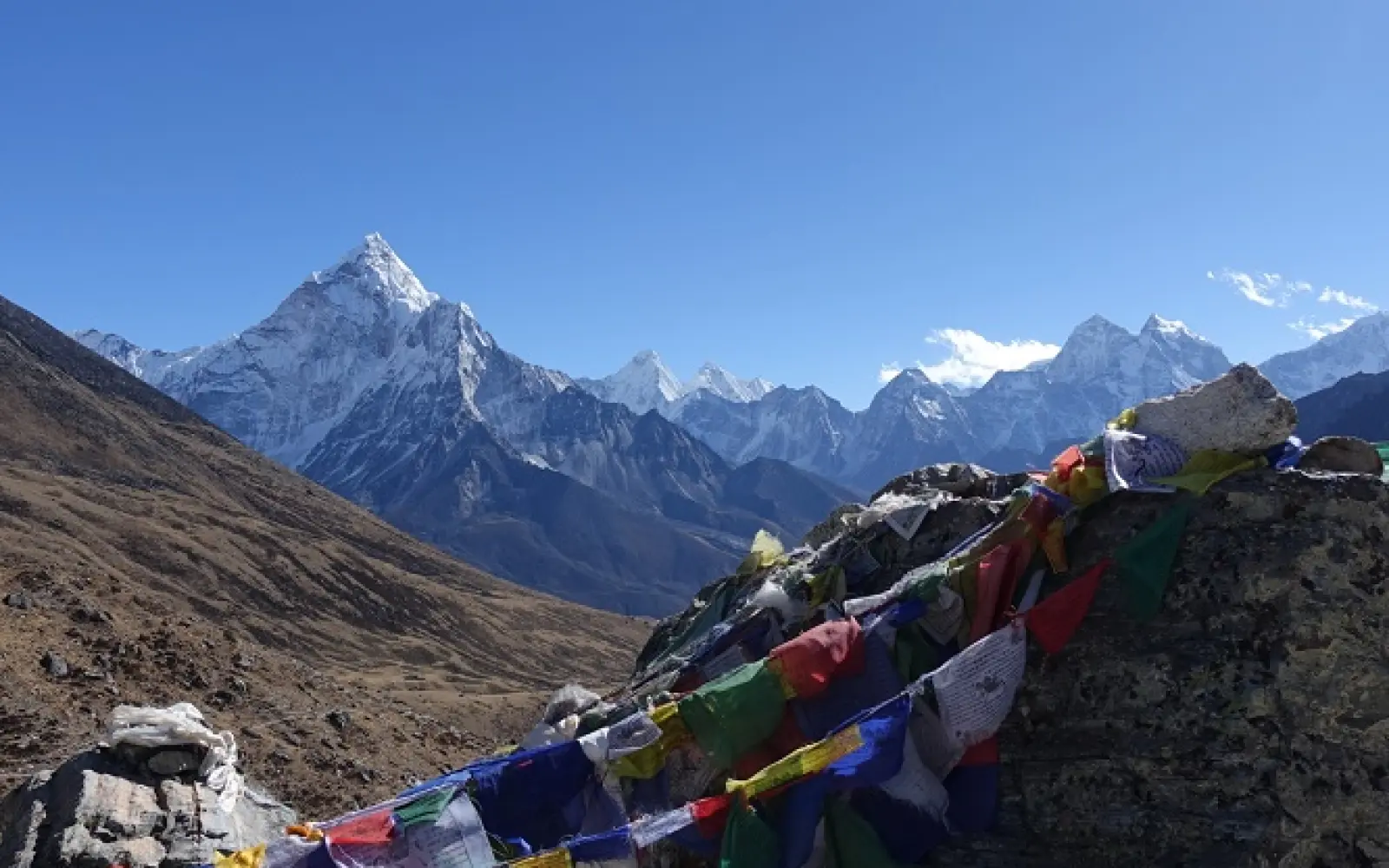
To begin with, the Everest Base Camp (EBC) Trek is Nepal's most well-known trekking adventure. It begins with the Lukla flight at 2,860 meters. Then, the trail follows the Dudh Koshi River valley to Phakding village. After that, trekkers make their way up to Namche Bazaar at 3,440 meters, the Sherpa capital of the Khumbu. In general, the trek is picturesque and cultural from the start.
Second, the trekking reaches Lengboche at 3,867 meters, which is famous for its monastery and landscape. Similarly, the route continues through Pangboche, Dingboche (4,410 m), and Lobuche (4,910 m). Additionally, trekkers reach Everest Base Camp at 5,364 meters via Gorakshep. Compared to other treks, this route offers close-up views of Mount Everest (8,848.86 m). Therefore, it's ideal for adventure and photography lovers.
Next, Kala Patthar (5,545 m) provides the finest sunrise view of Everest on Everest Base Camp Trek. Likewise, trekkers get to see mountains like Lhotse (8,516 m) and Nuptse (7,861 m). Additionally, the trail passes through mani walls, chortens, and prayer flags. Thus, the spiritual energy is palpable everywhere. The Sagarmatha National Park makes it rich in biodiversity. In brief, nature and culture are profound here.
Finally, the EBC trekking consumes about 12 to 14 days with proper acclimatization. Two days of acclimatization, one in Namche and one in Dingboche, are unavoidable. Because of high altitude, slow ascent is recommended to avoid illness. Furthermore, the teahouses along the trail offer good food and warm accommodation. Therefore, the trekkers are comfortable even though the terrain is remote. In conclusion, Everest Base Camp Trek is a life-changing Himalayan experience for many.
To begin with, autumn is the busiest season/finest time for the Everest Base Camp Trek. It comprises September, October, and November. The weather is dry, stable, and crystal clear during these three months. Additionally, the skies clear out to reveal breathtaking Himalayan vistas. In short, autumn provides perfect trekking conditions for hikers of all experience levels.
Secondly, the daytime temperatures in Autumn are warm and cold at night. For example, Namche Bazaar (3,440 m) is warm during October. Likewise, nights in Gorakshep (5,180 m) can drop to below zero. However, the daytime sun keeps the trail warm and comfortable. Therefore, proper layering and gear are required. Finally, teahouses are open and fully operational in autumn.
Besides, the landscape is unbeatable during the Autumn time of year. You can view Everest (8,848.86 m), Lhotse (8,516 m), and Ama Dablam (6,812 m) very distinctly. Similarly, the forests at Tengboche turn golden and vibrant. Unlike monsoon or winter, the trail is dry and clear. Therefore, trekking becomes more convenient and easier. In brief, nature looks at its best during this time.Finally, autumn also ushers in cultural richness. Important festivals like Mani Rimdu are celebrated in Tengboche. Trekkers have the opportunity to observe Sherpa culture, dances, and religious rituals. Likewise, the trekking trails are also full of energy and enthusiasm. Owing to the favorable conditions, many trekkers from around the globe visit here. So, it's also a time for social and cultural exchange. In brief, Everest Base Camp Trek in autumn is a complete combination of beauty, comfort, and celebration.
First of all, September heralds the arrival of Nepal's pleasant autumn season. The monsoon begins to recede early in the month. Therefore, trekkers can enjoy clear skies by mid-September. Likewise, the landscape looks fresh, green, and lush. In brief, September makes a colorful start to the Everest Base Camp trek.
Second, the trail from Lukla at 2,860 to Everest Base Camp(5364m) is clear and colorful. Waterfalls near Phakding still gush with post-monsoon force. Moreover, rhododendron forests glimmer in dew and sunshine. Similarly, Namche Bazaar at 3,440 meters is still cool and quiet. Therefore, trekkers are both relaxed and invigorated.
Later, the scenery of Mount Everest (8,848.86 m) improves after the middle of September. Likewise, Ama Dablam (6,812 m) and Lhotse (8,516 m) appear razor-sharp and vivid. Kala Patthar at 5,545 meters offers great morning scenery. As there are fewer clouds, sunrises are dramatic and golden. In brief, September rewards patient trekkers with magic.
Also, crowds in September along EBC Trail are smaller than in October. Thus, teahouses between Tengboche and Gorakshep are relaxed. You get quiet dining spaces and peaceful trails. Similarly, service gets more personalized and warm. Hence, solo trekkers and peaceful travelers love this season most. Tengboche Monastery - Everest Base Camp Trekking.
Finally, the Everest Base Camp weather in September has its pros and cons. Warm and sunny days dominate above 4,000 meters. But premature rains are still possible at lower elevations. Waterproof jackets and gaiters are therefore necessary. Additionally, Lukla flights can be postponed due to clouds. But the benefits outweigh the risks. In short, Everest Base Camp Trek in September offers fresh beauty, uncrowded trails, and cultural hospitality.

Firstly, October is the most popular month for the Everest Base Camp Trek. The skies stay crystal clear all day. Similarly, the weather remains dry and cool throughout the trail. You’ll enjoy stable conditions from Lukla (2,860 m) to Everest Base Camp (5,364 m). In conclusion, October is the perfect time for trekking in the Everest region.
Second, the Himalayan peaks' view is just stunning during EBC Trek in October. Mount Everest (8,848.86 m) looks different and gigantic from Kala Patthar (5,545 m). Likewise, Lhotse (8,516 m), Ama Dablam (6,812 m), and Thamserku (6,608 m) shine brightly. The sun's rays put golden hues on snow-capped peaks. So, October is paradise for photographers and mountain lovers.
Similarly, the daytime temperatures are pleasant and nighttime temperatures are cold. Namche Bazaar (3,440 m) is warm during the afternoon. However, Gorakshep (5,180 m) and Base Camp get cold at night. So, it needs warm sleeping bags and multi-layered clothing. In brief, October weather is best for comfort and adventure.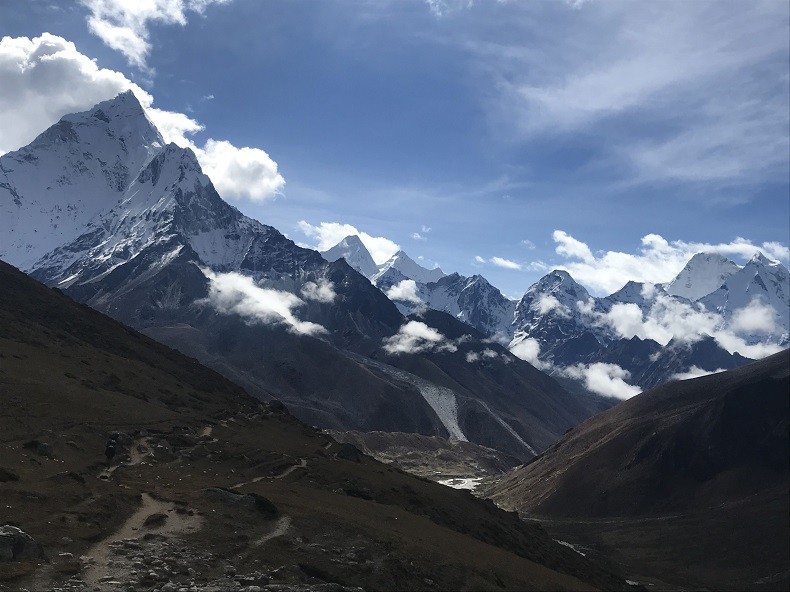 Furthermore, there are cultural highlights that enrich your Everest Base Camp trekking experience in October. The Tengboche Monastery (3,867 m) hosts the Mani Rimdu Festival. Trekkers witness masked dances, chants, and Sherpa rituals. Local villages also celebrate harvest and greet visitors with warm smiles. Therefore, you gain more cultural insight in October.
Furthermore, there are cultural highlights that enrich your Everest Base Camp trekking experience in October. The Tengboche Monastery (3,867 m) hosts the Mani Rimdu Festival. Trekkers witness masked dances, chants, and Sherpa rituals. Local villages also celebrate harvest and greet visitors with warm smiles. Therefore, you gain more cultural insight in October.
Finally, October seems the highest number of trekkers to Everest Base Camp. Thus, trails are lively and sociable. However, teahouses fill up quickly in places like Dingboche (4,410 m) and Lobuche (4,910 m). Because of this, advance booking is essential. But the crowd adds energy and friendship. In short, Everest Base Camp Trek in October provides clear vistas, stable weather, and cultural thrill.
Firstly, November marks the end of the autumn trekking season in Everest region and in entire Nepal. The weather in November in Everest region remains stable, dry, and cold. Likewise, the skies still remain clear, offering great mountain vistas. Trekkers enjoy the cool air from Lukla (2,860 m) to Everest Base Camp (5,364 m). In brief, November offers a peaceful and scenic trek.
Second, the temperatures during Everest Base Camp Trek in November start to drop, especially at the higher altitudes. Namche Bazaar (3,440 m) experiences cool days and cold nights. Similarly, Dingboche (4,410 m) and Lobuche (4,910 m) get colder as winter is approaching. However, daytime temperatures are still comfortable for trekking. Therefore, proper warm equipment is required for November trekkers.
Next, mountain views in EBC Trek in November are clear and spectacular. Mount Everest (8,848.86 m), Lhotse (8,516 m), and Ama Dablam (6,812 m) rise against deep blue skies. Likewise, Kala Patthar (5,545 m) sunsets color the peaks orange and pink. With reduced humidity, photographic conditions improve. In brief, November offers excellent visuals.
Additionally, the EBC Trek path in November is less crowded than in October. Most trekkers complete their trip by early November. Therefore, teahouses at villages such as Tengboche (3,867 m) and Namche provide more individualized service. Likewise, Sherpa culture feels relaxed and welcoming. Hence, November is ideal for those who want solitude and contemplation.
Finally, there are also some challenges while doing Everest Base Camp Trek in November. Cold nights dip below freezing even at lower settlements. Also, short daylight hours reduce trekking time. Therefore, trekkers need to start early and carry headlamps. Moreover, flights to Lukla can have foggy delays. Despite this, November is a great time to enjoy Everest Base Camp Trek with fewer crowds and stunning scenery.

To begin with, the autumn season offers various advantages to Everest Base Camp trekkers. The weather remains dry and stable, making the trail safe and comfortable. Moreover, clear skies provide spectacular views of Everest (8,848.86 m), Lhotse (8,516 m), and Ama Dablam (6,812 m). Similarly, warm daytime temperatures allow for comfortable trekking without overheating. Therefore, autumn is the best season for excellent scenery and comfortable trekking.
Second, Sherpa villages and cultural festivals contribute to the trekking enjoyment. For example, the Mani Rimdu Festival of Tengboche Monastery is a great tourist attraction. Likewise, autumn trekking enables you to experience multicolored traditions and locals' hospitality. In addition, teahouses and lodges are fully open and offer reasonable services. In brief, autumn mixes nature and culture in an excellent manner.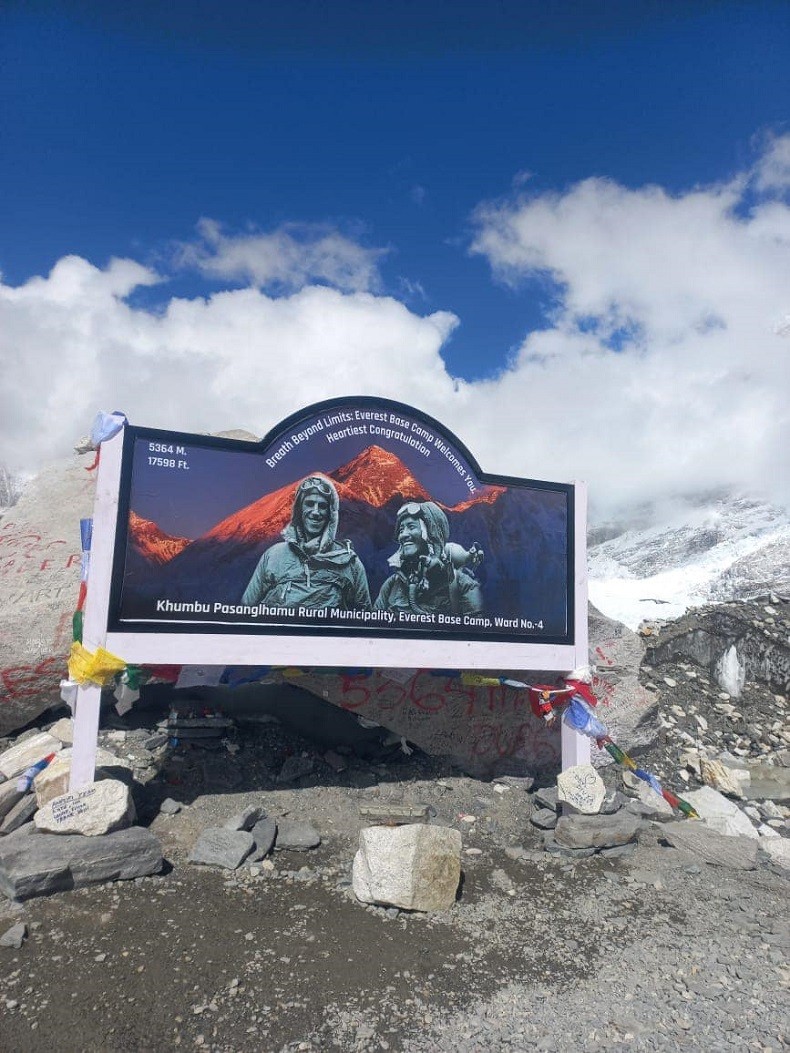 On contrary, there are a few disadvantages of Everest Base Camp Trek during the autumn season. The huge number of trekkers may result in crowded trails and teahouses. For instance, popular stops like Namche Bazaar (3,440 m) and Dingboche (4,410 m) become busy. Similarly, accommodation prices may increase due to demand. Therefore, advance booking is necessary to avoid inconvenience.
On contrary, there are a few disadvantages of Everest Base Camp Trek during the autumn season. The huge number of trekkers may result in crowded trails and teahouses. For instance, popular stops like Namche Bazaar (3,440 m) and Dingboche (4,410 m) become busy. Similarly, accommodation prices may increase due to demand. Therefore, advance booking is necessary to avoid inconvenience.
Also, nights in higher altitude in October and November get very cold, especially above 4,000 meters. For example, the temperature in Gorakshep (5,180 m) can drop below freezing. Likewise, early November can get occasional snowfall, which affects trail conditions. Therefore, proper warm clothing and gear are required. In short, autumn trekking involves preparing for cold nights and crowded trails.
Finally, early winter conditions in late autumn can delay Lukla flights. Also, the shorter days may reduce trekking time in November. However, these problems are outweighed by the advantages. In short, autumn remains the best season for Everest Base Camp trekking.
Firstly, Everest Base Camp trekking in Autumn requires physical fitness. Start training two to three months earlier. Also, focus on cardio exercises like running, hiking, and cycling. Similarly, leg and core strengthening exercises build endurance. Therefore, regular practice builds up stamina for high-altitude trekking.
Secondly, mental preparation allows you to face altitude problems with composure during your Everest Base Camp Trek in Autumn. Educate yourself on the causes of and how to avoid altitude sickness. Likewise, plan rest and acclimatization days along the Everest Base Camp trek properly. Furthermore, be optimistic and tolerant while navigating difficult sections of the trail. As a result of this, mental strength makes autumn trekking safe
Then, make required permits and documents for EBC Trek ready in advance. You need a TIMS card and Sagarmatha National Park permit. Also, take travel insurance that covers high-altitude trekking and emergency evacuation. Likewise, book flights to Lukla and hotel reservations in advance as it's peak season. So, advance planning eliminates last-minute inconvenience.
Also, pack smart for your Everest Base Camp Trek in Autumn with layered clothing for autumn weather. Include thermal equipment, rain coats, and warm sleeping bags. Also, include good hiking boots, gloves, hats, and sunglasses. Also, include water purification tablets and a first-aid kit. Because of changing temperatures, it is essential to pack versatile equipment.
Finally, visit your doctor before your Everest Base Camp trek begins. Discuss altitude sickness medication if necessary and address all health issues in you have any beforehand. Carry required medicine if necessary. Also, drink plenty of water and eat well during training and trekking. Moreover, practice breathing exercises for better lung function. In short, proper preparation ensures a safe and successful Everest Base Camp Trek in autumn.

For one, proper packing ensures you remain comfortable and safe throughout the Everest Base Camp Trek in Autumn. Actually, Autumn weather along EBC Trail is cold, dry, and sunny. Therefore, you need to dress in layers to help acclimatize to changing temperatures.
1. Thermal base layers (top and leg)
2. Fleece jacket
3. Down insulated jacket
4. Waterproof and windproof jacket
5. Waterproof trousers
6. Trekking trousers
7. Quick-drying shirts
8. Insulated gloves
9. Wool or fleece hat
10. Neck gaiter or buff
11. Hard trekking boots
12. Camp shoes or sandals with high comfort
13. Thick hiking socks (wool or synthetic)
14. Sunglasses with UV protection
15. Wide-brim sun hat or cap
16. Hiking poles
17. Headlamp and spare batteries
18. First aid kit (bandages, antiseptic, blister care)
19. Water purification tablets or filter
20. Sunscreen with high SPF
21. Lip balm with SPF
22. Insect repellent
23. Personal medications
24. Altitude sickness medication (if prescribed)
25. Durable daypack (20-30 liters)
26. Sleeping bag rated to -10°C or colder
27. Reusable water bottle or hydration bladder
28. Energy bars and snacks
29. Camera or smartphone and charger
30. Plastic bags for trash and wet clothing
Finally, packing these gears gets you well prepared for Everest Base Camp in autumn weather. Good equipment keeps you warm, secure, and energized. As a summary, an intelligent packing list is the gateway to a successful trek.
Firstly, the weather in Autumn at Everest Base Camp is ideal for trekking. The weather is clear and sunny for the most part during the months of September, October, and November. Therefore, trekkers enjoy clear views of Mount Everest (8,848.86 m) and surrounding peaks like Lhotse (8,516 m) and Ama Dablam (6,812 m). Moreover, the air is dry, which reduces humidity and discomfort. In short, autumn weather promises excellent visibility and pleasant trekking conditions.
Second, daytime temperatures in Autumn along EBC trail vary by elevation but are mostly moderate. For example, Namche Bazaar (3,440 m) experiences 10°C to 20°C daytime temperatures. Similarly, Dingboche (4,410 m) experiences daytime temperatures of 5°C to 15°C. Nighttime temperatures, however, decrease significantly, especially higher than 4,000 meters. For example, Gorakshep (5,180 m) commonly experiences freezing or sub-freezing nighttime temperatures. Hence, warm clothing is essential to stay comfortable and avoid hypothermia. In the same way, layers allow adjustment to the changing temperatures throughout the day.
Then, there is minimal rainfall in autumn along EBC Trek Route. The monsoon season wraps up at the end of August, and hence rain is minimal in September, October, and November. These months seldom get snow at high elevations, mostly in late November, but this does not normally affect trekking. As a result of little precipitation, the trails are dry and less slippery. This makes walking safer and more comfortable. So, autumn is the safest season of the year weather-wise for Everest Base Camp trekking.
Finally, there is sufficient daylight for Everest hiking in Autumn and visiting places every day. The days are long enough to complete challenging sections at ease. Moreover, sunrises and sunsets render the sky breathtaking above the Himalayas. The clear weather causes intense colors to light up peaks like Mount Everest. However, temperatures fall quickly after nightfall. Hence, trekkers must be ready for cold nights and evenings. Overall, autumn weather allows for a safe and successful trekking trip to Everest Base Camp.
First of all, November still enjoys clear and stable weather at Everest Base Camp. By this time, the monsoon has completely stopped. Therefore, trekkers enjoy mostly sunny days with blue skies. Similarly, low humidity keeps the air crisp and dry. In brief, November weather offers perfect trekking conditions.
Secondly, temperatures drop significantly while doing Everest Base Camp Trek in November. For example, Namche Bazaar (3,440 m) has daytime temperatures of about 10°C. Temperatures fall near freezing at night. Likewise, Dingboche (4,410 m) has daytime temperatures of 5°C to 10°C. Nights are cold, however, typically below 0°C. Also, at Gorakshep (5,180 m), the temperature can drop to -10°C or lower at night. Good warm clothes and sleeping bags are required, therefore.
Third, precipitation along EBC Trail is rare in November. Rainfall practically comes to a standstill, and snowfall is minimal until the last week of the month. As a result of this, there are dry trails and comfortable to trek on. The lack of rain improves safety on steep and rocky sections. Consequently, trekkers have dry and stable trail conditions.
Finally, there are fewer daylight hours in November compared to October. The days are still long enough for day treks, but you must get going early. The sun rises at around 6 am and sets earlier than 5 pm. There is time enough for trekking and enjoying the scenery. Also, clear skies provide breathtaking sunrises and sunsets. Mountains like Everest (8,848.86 m) appear beautiful during the low sun. Temperatures fall rapidly after dark, however, so trekkers should be prepared. Lastly, November weather offers clear views and cooler temperatures, perfect for experienced trekkers.
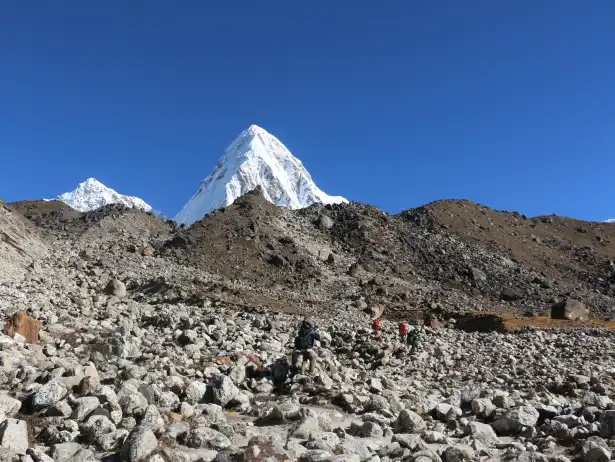
To begin with, October is the most ideal month to hike to Everest Base Camp because of excellent weather. The monsoon has just cleared, and the skies are clear with dry air. Accordingly, trekkers are rewarded with excellent panoramic views of mountains like Mount Everest (8,848.86 m) and Lhotse (8,516 m). Moreover, the air is crisp and clean, which makes it easier to breathe at high altitude. In brief, October offers ideal weather for trekking.
Secondly, daytime temperatures in October along EBC Trek Route are mild and pleasant. Namche Bazaar (3,440 m), for example, experiences daytime temperatures of 15°C to 20°C. Dingboche (4,410 m) also experiences daytime temperatures of 10°C to 15°C. Nights, however, become cold, especially above 4,000 meters. Temperatures in Gorakshep (5,180 m), for example, fall below freezing after sunset. Warm clothing and quality equipment are therefore necessary for comfort.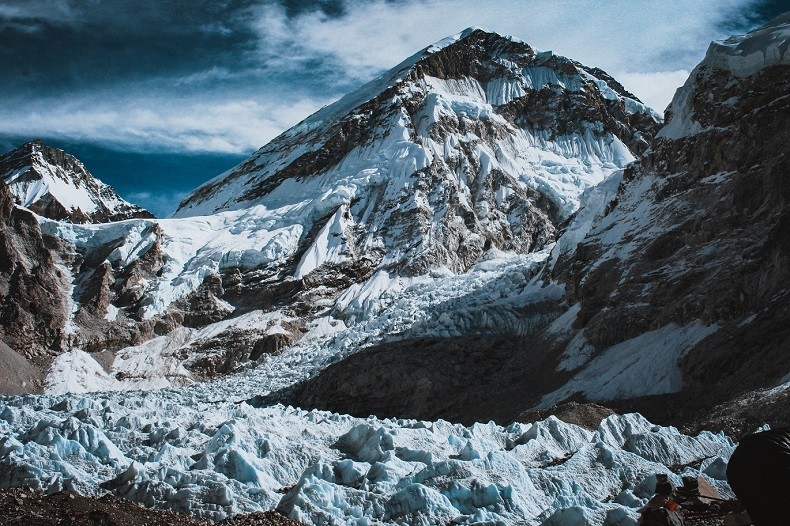 Third, there is very little precipitation during Everest Base Camp Trek in October. The monsoon season ends in late August or early September, so there will be no rainfall. Similarly, snowfall is also unlikely at anything but the highest elevations and only occurs later in the season. As a result of this, the trekking trails are dry and safe. This reduces the risks of slips and falls. Therefore, October is one of the safest months to trek to Everest Base Camp.
Third, there is very little precipitation during Everest Base Camp Trek in October. The monsoon season ends in late August or early September, so there will be no rainfall. Similarly, snowfall is also unlikely at anything but the highest elevations and only occurs later in the season. As a result of this, the trekking trails are dry and safe. This reduces the risks of slips and falls. Therefore, October is one of the safest months to trek to Everest Base Camp.
Finally, the daytime is sufficiently long to allow comfortable trekking. The sun rises early, at around 6 am, and sets late, at around 6 pm. This allows trekkers to cover long distances during daylight. October sunsets also color the Himalayan peaks in otherworldly hues. Mount Everest (8,848.86 m) assumes shades of orange and pink during the evening sun. All in all, October provides the ideal combination of weather, safety, and scenery for your Everest Base Camp Trek.
To begin with, the best season to trek to Everest Base Camp is autumn. The autumn season ranges from late September to November. The autumn weather is clear, dry, and stable. Therefore, the trekkers get excellent views of Mount Everest (8,848.86 m) and other Himalayan peaks. Moreover, the trekking trails are dry and safe, which facilitates trekking. In brief, autumn is the ideal season for Everest Base Camp.
Second, spring is another popular and crowded season for Everest Base Camp Trek. It lasts from March to May. During spring, rhododendron forests are in full bloom with colorful flowers. Likewise, temperatures start to rise after winter. Additionally, the skies are mostly clear with occasional showers. Therefore, spring offers colorful landscapes and moderate temperatures. Nevertheless, spring has more trekkers than autumn, so teahouses might be crowded.
Next, winter (December to February) and monsoon (June to August) are not so ideal time for EBC Trek. Winter is extremely cold with snowfall. The high passes can be blocked by snow. Similarly, the monsoon season brings heavy rainfall and slippery trails. It increases the risk of landslide and delay. Thus, trekking in these seasons is less comfortable and secure.
Finally, both autumn and spring offer good weather and cultural festivals for Everest Base Camp Trek. Autumn hosts the Mani Rimdu festival in October-November. Spring welcomes blooming rhododendrons and milder temperatures. Therefore, these seasons provide the best trekking experience. In conclusion, planning your Everest Base Camp trek in autumn or spring ensures safety, beauty, and cultural richness.

Firstly, Everest Base Camp trekking in Autumn will be a lifetime experience. The skies are clear and stable with breathtaking views of Everest (8,848.86 m) and surrounding peaks. Moreover, the dry air and comfortable temperatures provide excellent trekking. Therefore, autumn is the ideal season for most trekkers.
Second, autumn allows you to experience rich Sherpa culture and festivals during your EBC Trek. For instance, the festival of Mani Rimdu in Tengboche Monastery usually falls at this time. Likewise, the surrounding local villages celebrate the harvest season with rich traditions. These cultural experiences add meaning to your trek. In brief, autumn mixes natural beauty with rich culture in a perfect manner.
Next, the Everest Base Camp trail conditions are generally safe and well-maintained in autumn. It is a dry weather, hence trails are less slippery than during monsoon. Likewise, teahouses and lodges are open and hospitable. However, popular destinations such as Namche Bazaar (3,440 m) and Dingboche (4,410 m) can get crowded. Therefore, booking accommodation in advance is required. Despite this, the social atmosphere can be enjoyable.
Finally, physical and mental preparation is essential for a successful Everest Base Camp trek. Proper training, packing the right equipment, and acclimatization days are crucial. Also, respecting nature and local culture makes the experience rewarding. In conclusion, autumn offers a perfect blend of adventure, beauty, and culture for Everest Base Camp trekkers.
In summary, Everest Base Camp Trek in autumn ensures lifelong memories. The season promises ideal weather, breathtaking scenery, and cultural richness. Therefore, plan your trek in autumn for the best experience. Here, we, Haven Holidays Nepal Team also suggest to plan your EBC Hike during Autumn months.
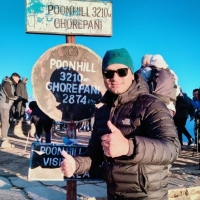

Everest Base Camp Trek Everest Base Camp Trek-All the way to the roof of the world. The Everest Base Camp Trek is the most rewarding adventu...

Everest Base Camp Trek: DescriptionEverest Base Camp Trek: A Journey to the Base of the World's Highest MountainEverest Base Camp Trek (EBC Trek) is a...
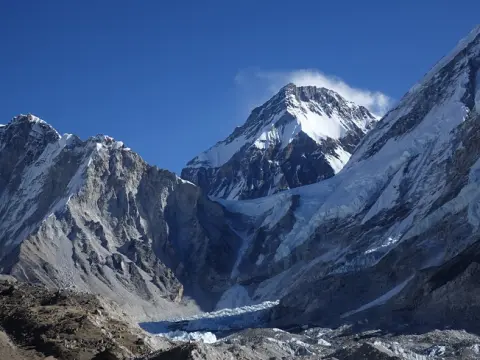
Everest Base Camp Trek at a GlanceThe Everest Base Camp Trek (EBC Trek) is one of the most popular classical treks in the world with stunning views of...
